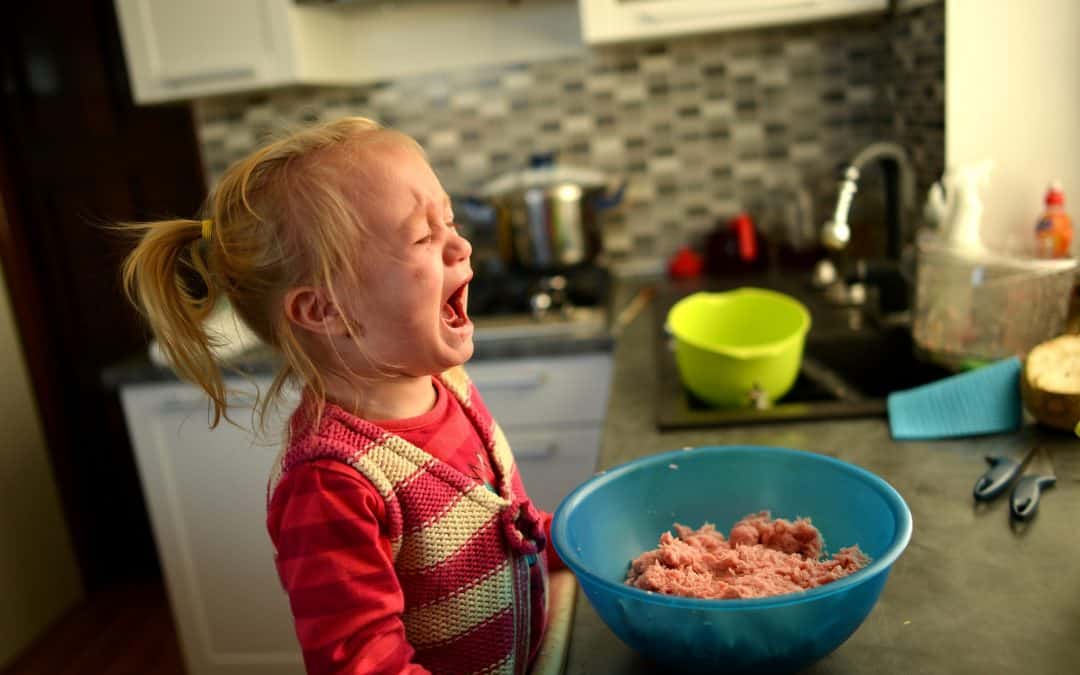Picture this, you’re in a crowded grocery store with your child; it’s stressful, there are loud noises and stimuli everywhere and your child starts to feel overwhelmed and then comes the meltdown. If you’re a parent, that scenario is probably fairly easy to imagine—we’ve all been there. It may even be a source of embarrassment being in a public place. A meltdown ramps up everyone’s stress, which makes handling the situation even more difficult. The best solution is to prepare for how to stop a child meltdown, because it will probably happen again.
First, it helps to recognize that tantrums and meltdowns are common. Anyone with a toddler can relate. In fact, according to the Cleveland Clinic toddlers throw an average of one tantrum a day and they can happen for a variety of reasons. Some parents use the words tantrum and meltdown interchangeably, but there are some slight differences that may help identify which your child is having so you can better help them through the challenge.
Child Meltdown versus Temper Tantrum
The Child Mind Institute provides a helpful distinction between a tantrum and a meltdown. Put simply, a tantrum is usually milder and will likely subside if your child is given space and breathing room. Conversely, a meltdown is much more extreme and may only stop when the child wears themselves out completely or is successfully calmed down by someone else.
Knowing whether your child is having a tantrum or a meltdown will allow you to identify the best course of action moving forward. In either case, follow the steps:
- The first thing to do is remain calm. An emotional and stressed response will contribute to the tantrum or meltdown rather than helping calm the situation. If it’s a tantrum, remaining calm and actively ignoring the poor behavior is the best course of action.
- For safety if you’re in public, move your child to a safe place and keep an eye on them.
- Once they’ve finished their tantrum give them specific praise for their positive behavior. Johns Hopkins recommends saying something like, “Thank you so much for sitting quietly.”
Breaking Down the Meltdown
On the other hand, if your child is having a meltdown, which could involve a full-body reaction to being overwhelmed and is noticeably more extreme, there may be a better response than active ignoring. Start with knowing how to prevent meltdowns:
- The first step to avoid meltdowns is to identify your child’s triggers. They could be experiencing intense emotions, sensory overload, unexpected changes, pain, fear, or anxiety. Whether it’s a mild tantrum or a mega meltdown, your child is dealing with emotions they cannot regulate. Identifying those triggers before a meltdown will help you know how to respond.
- If you know that your child is in a situation that triggers them, keep careful watch to see if their emotions are escalating. Catching those signs early enough can prevent or de-escalate a full-blown meltdown, especially if you’re able to distract your child from the trigger.
It’s not always possible to prevent a child meltdown or the things that trigger those meltdowns. When your child is in the midst of one, there are some things you can do to help:
- Remain calm and be patient.
- Make sure your child is in a safe place.
- Create a calming space with peace and quiet. Attempt to de-escalate the triggers.
- Understood.org recommends toning things down, turn down the lights if possible, and try not to crowd your child. Provide a calm space for your child to take deep breaths and it will help them relax and come out of the meltdown state.
The Post-Meltdown Plan
While tantrums and meltdowns can happen to any child, no parent wants them to happen regularly. Part of your post-meltdown plan should include how to avoid them in the future. Both you and your child can learn from the meltdown and recognize the triggers that can cause future meltdowns. Start with these essential tools:
- Engage your child in conversation about the meltdown after they are ready to talk calmly.
- Help them identify their triggers so they can grow emotionally and be an active participant in calming themselves down in the future.
It takes practice, but you can learn to prevent meltdowns and tantrums; so can your child. Give your child the tools to learn their own coping mechanisms and the meltdowns will become fewer and farther between.
Herrera Psychology can help you and your child learn the best way to handle and, more importantly, prevent emotional meltdowns before they occur. We offer solution-based help that keeps your child engaged and works with you to help them grow.
For more information on the services we provide and getting started with Herrera Psychology, follow this link and get started with a pediatic wellness checkup.


